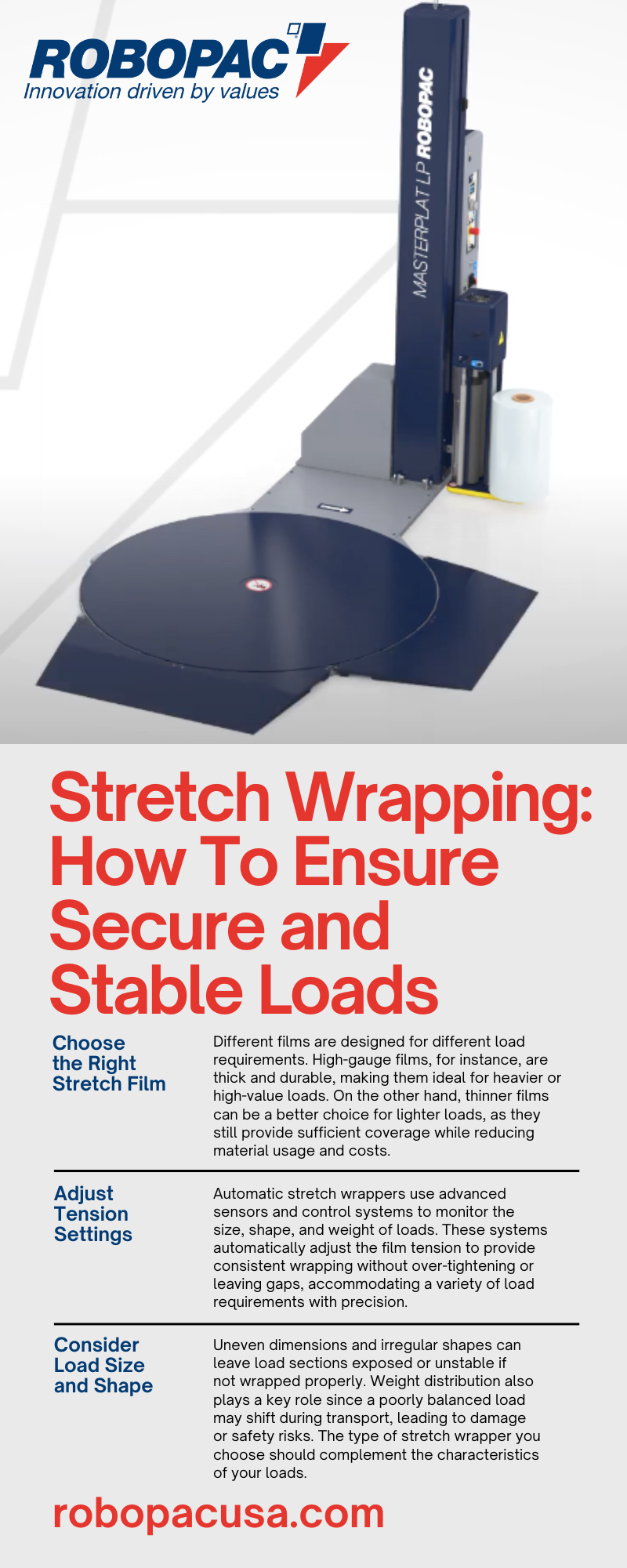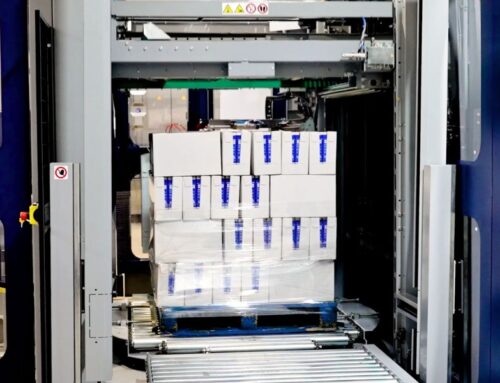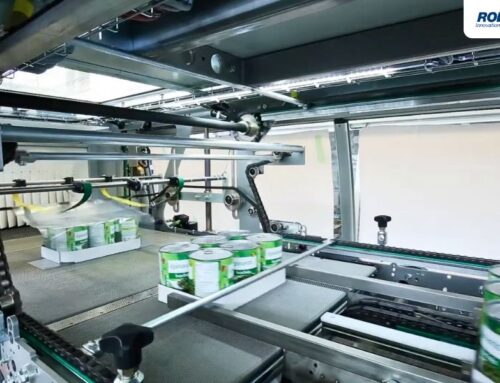Stretch wrapping is a vital process in making sure that transported goods arrive at their destinations without damage. Whether you’re in manufacturing, warehousing, or logistics, mastering the best stretch wrapping techniques can significantly improve load stability and reduce costs. Learn how to ensure secure and stable loads with stretch wrapping to optimize your wrapping process, maintain load stability, and cut down on operational costs.
Choose the Right Stretch Film
The first step to effective stretch wrapping is selecting the proper stretch film. Different films are designed for different load requirements. High-gauge films, for instance, are thick and durable, making them ideal for heavier or high-value loads. On the other hand, thinner films can be a better choice for lighter loads, as they still provide sufficient coverage while reducing material usage and costs.
Understanding the load characteristics will help you select the most appropriate film, so consider factors like load weight, shape, and sensitivity. Investing in quality stretch film ensures better containment and prevents the risk of tears or breakage during transit, reducing potential losses.
Adjust Tension Settings
Proper tension is key to securing your load without damaging the film or products. If the tension is too high, the film may tear during the wrapping process; if it’s too loose, the load may shift or become unstable. Stretch wrappers often come with adjustable tension settings, allowing you to find the perfect balance for your specific application.
Automatic stretch wrappers use advanced sensors and control systems to monitor the size, shape, and weight of loads. These systems automatically adjust the film tension to provide consistent wrapping without over-tightening or leaving gaps, accommodating a variety of load requirements with precision. By optimizing the tension settings, you can achieve consistent tightness throughout the entire load, reducing weak spots and providing uniform compressive forces to keep the cargo secure.
Ensure Even Wrapping
Starting with solid overlaps is essential for full coverage, and checking for uniform layers is critical to avoid gaps. An uneven film application increases the chances of load shifts or film tears during storage and transport.
Uneven wrapping can make the load vulnerable to the following risks:
- Exposure to environmental elements, such as rain, snow, humidity, or sunlight, which can lead to material degradation or spoilage.
- Physical impacts during transit, including bumps, vibrations, and other forces that cause dents, scratches, or breakage.
- Shifting or collapsing goods, which can result in disorganized pallets and damaged items.
- Contamination from dust, dirt, or other unwanted substances that can affect the products.
- Pallet instability, where an unsecured base causes the load to lean or collapse, creating safety hazards.
- Abrasion or tearing of wrapping film, which further compromises load integrity during transport.
- Theft or tampering, making poorly wrapped loads an easier target during transit or storage.
- Liability issues, such as claims, returns, or lost customer trust due to damaged goods.
Using a pallet wrapping turntable from Robopac USA can significantly improve the consistency of the wrapping process. The rotating base ensures smooth and even coverage, so every part of the load is adequately protected. Machines like these minimize human error and provide high-quality wrapping across different load types.
Use Pre-Stretch Features To Save Film
Pre-stretching is a feature that can help reduce material costs while improving load containment. By stretching the film to its optimal limit before applying it, you can use less film to stabilize each load. Many modern stretch wrappers include a pre-stretch setting to make wrapping more efficient.
Pre-stretching also makes the film tighter and stronger, offering better load stability. This feature not only saves money on materials but also streamlines the wrapping process, keeping workflows smooth and efficient.
Consider Load Size and Shape
Considering load size and shape is essential to ensuring secure and stable loads with stretch wrapping. Taking these factors into account helps you determine whether you need to adjust the tension settings, use a specific type of stretch wrapper, or employ additional stabilizing materials, like corner boards.
Uneven dimensions and irregular shapes can leave load sections exposed or unstable if not wrapped properly. Weight distribution also plays a key role since a poorly balanced load may shift during transport, leading to damage or safety risks. The type of stretch wrapper you choose should complement the characteristics of your loads. For instance, rotary arm stretch wrappers are ideal for bulky or irregularly shaped loads, as they don’t require the load to rotate.
Secure the Base
Anchoring the load to the pallet is a fundamental aspect of ensuring stability. Failing to secure the base can cause the load to slide or disconnect from the pallet during handling or transport, significantly increasing the risk of damage.
Focus on wrapping the base with extra layers of film to integrate the load with the pallet. This anchoring technique creates a solid foundation, allowing for safer stacking, transportation, and unloading.
Perform Regular Equipment Maintenance
Well-maintained stretch wrapping equipment provides reliable performance and consistent wrapping quality. Dirty rollers, faulty tension mechanisms, and worn-out parts can lead to uneven application of the film or machine malfunctions. Neglecting maintenance can result in operational delays and compromised load security.
Carry out regular inspections to identify and fix any wear and tear on your stretch wrapper. Clean the rollers frequently and calibrate the tension settings to make sure the machine performs optimally. Following the manufacturer’s recommendations minimizes downtime and extends your machine’s lifespan.
Train Employees on Best Practices
Even with state-of-the-art equipment, human error can often undermine the wrapping process. Employees tasked with operating stretch wrappers need to be trained on best practices to ensure safety and consistency across different load types.
Walk them through the controls, such as adjusting film tension or wrapping speed, and explain how these settings should match the type of load. Make sure to cover safety basics, like how to safely load the machine, use emergency stop functions, and avoid accidents while operating the equipment. Give them chances to practice wrapping different types of loads while supervised so they can learn from any mistakes. Regularly update them on new equipment features or techniques and provide feedback to reinforce their skills.
Test Wrapped Loads
A critical final step is testing the stability of your wrapped loads before sending them out. Simulating real-world movement, such as tilting or vibration, can help you determine how secure the loads will be during transport. Use shake tests or tilt testing equipment to replicate the forces your loads will encounter while in transit. These tests reveal any weaknesses in your wrapping process, giving you the chance to address issues before the loads leave the facility.
It’s recommended to test wrapped loads every few weeks or monthly, depending on shipment volume and load stability concerns. Additionally, if you change load types, wrapping materials, or equipment settings, more frequent testing may be necessary to guarantee consistent security.
Effective stretch wrapping requires selecting films suited to your loads, maintaining correct tension settings, and focusing on even weight distribution. Regularly maintained equipment and thorough testing help eliminate weak points and keep processes efficient, while properly trained employees can ensure consistent wrapping across all operations. These combined efforts lead to dependable protection, cost savings, and smoother load handling.








